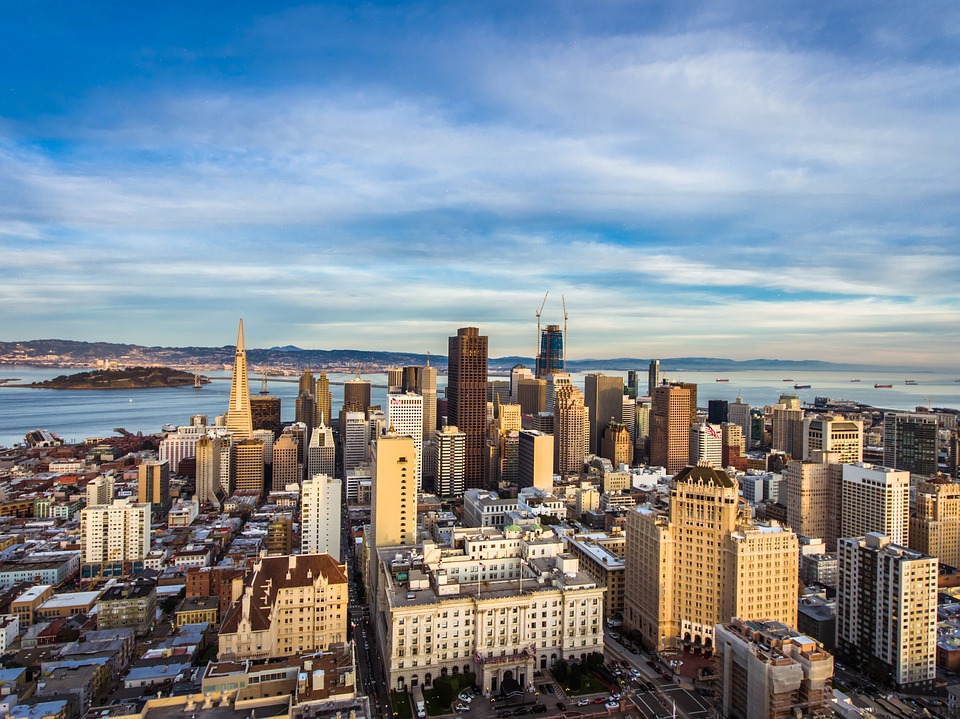Today LA, San Francisco, San Jose, and Santa Monica announced they will join 15 large cities around the world in a commitment to net zero carbon buildings. Buildings are one of the largest sources of climate pollution in California, and there is growing recognition that we must drastically reduce buildings’ use of fossil fuels in order to stave off the worst impacts of climate change.
According to the World Green Building Council who led this charge, net zero carbon means that buildings are “highly energy efficient and fully powered from on-site and/or off-site renewable energy sources.” This means healthy, comfortable and affordable homes and businesses that lower energy bills while reducing air pollution, and slowing climate change.
The cities committed to all new buildings operating net zero carbon starting in 2030, and 100% of buildings operating at net zero carbon by 2050. It’s clear that getting to zero carbon buildings will necessitate a whole lot of building electrification.
The zero carbon building commitment shows the direction California needs to head in-- a pathway that will help stabilize the climate and improve our health and comfort, while lowering energy bills and creating new jobs. Super-efficient electric appliances (like heat pumps and induction stoves) paired with California’s massive growth in clean energy resources mean that cities, and ultimately the state, will be able to set, meet, and benefit from ambitious building decarbonization targets.

The announcement is also an exit sign for the gas industry. For decades, the majority (roughly 85%) of California homes have relied on gas appliances like gas furnaces and water heaters. Although these appliances may be “out of sight, out of mind,” they produce as much carbon emissions as all of the state’s power plants combined. And this does not include all of the methane that leaks out of the gas system and inside our homes. Methane leakage is not just a major liability to a stable climate, it also poses immediate local safety and fire risks-- risks we cannot afford in our fire-prone state.
Each new report that comes out demonstrates how we are dangerously underestimating the climate and health impacts of gas:
- Earlier this summer, scientists announced that methane leakage is significantly higher than previously thought. Their synthesis paper finds that fugitive methane emissions that occur from the drilling site up to the gas meter are at least 60% higher than U.S. EPA estimates.
- There’s also leakage after the gas meter that’s always left out of the equation. A recent report out of Lawrence Berkeley National Laboratory surveys 75 homes with gas appliances across California, and finds that a significant amount of methane (estimated at 0.5%) leaks inside our homes on a daily basis -- equivalent to $30 million of wasted gas a year.
- Last, and perhaps least discussed, numerous studies highlight the threat gas stoves pose to our health everyday.
Done right, all-electric homes, schools, and workplaces will help to solve these problems, and be more safe, comfortable, and healthy, with lower monthly utility bills.
We know LA, San Francisco, San Jose, and Santa Monica aren't the only cities looking at building electrification in California. Here are five essential steps cities and regulators should work on together as they move to phase out fossil fuels in our buildings:
- For starters, establish ambitious building electrification goals and a timeline that aligns with climate targets. This will send a powerful and much needed message to manufacturers, builders, utilities, and labor on the opportunities to participate in our carbon-free future.
- Let’s stop making the problem worse -- electrify new construction. There’s no reason to keep installing costly gas pipelines and infrastructure in new buildings when we can build all-electric at lower cost today. We need cities to lead the way with reach green building codes, and the California Energy Commission to evolve the focus from “zero net energy” to “zero emissions” in the next California building code update.
- Help folks make the switch, especially low-income residents and renters. Incentives for advanced electric appliances are needed to spur adoption early on and jump start the heat pump market in California, which lags behind other states. The CPUC, CEC, utilities and CCAs can all play a leading role here, and should prioritize ensuring that low-income residents have access to these clean energy solutions from the get go.
- Reward electricity use that supports renewables and grid flexibility. Time-of-use rates that better reflect the cost of operating the electric grid at different times of day, with lower rates when there is abundant low-cost renewable energy online, will reduce bills while making it easier for California to power its buildings from available clean energy.
- Consider electrification as a neighborhood-wide solution. When there are gas reliability issues and/or problems with gas infrastructure, instead of throwing millions of dollars into the pipeline system, regulators should consider the costs and benefits of investment in large-scale electrification and begin strategically “pruning” our aging gas distribution system.
- Support workforce development and a just transition. Electrifying buildings will necessitate the creation of new jobs and planning early on to develop the workforce training, outreach, and just transition measures needed for electricians, plumbers, HVAC installers, contractors, and other trades to move our homes, schools, and businesses off fossil fuels. I just came from an electrification conference and it is clear that there is a lot of work to do to build an electric future, but we have to ensure that no one is left behind, and that the careers of the future are as good or better than the ones today.
Today’s announcement is further evidence that gas is on the way out in California and around the world. We look forward to working with LA, San Francisco, San Jose, Santa Monica and other cities to establish leading edge policies and programs so Californians can turn off fossil fuels, and live in affordable, safe, and climate-resilient homes and communities.
